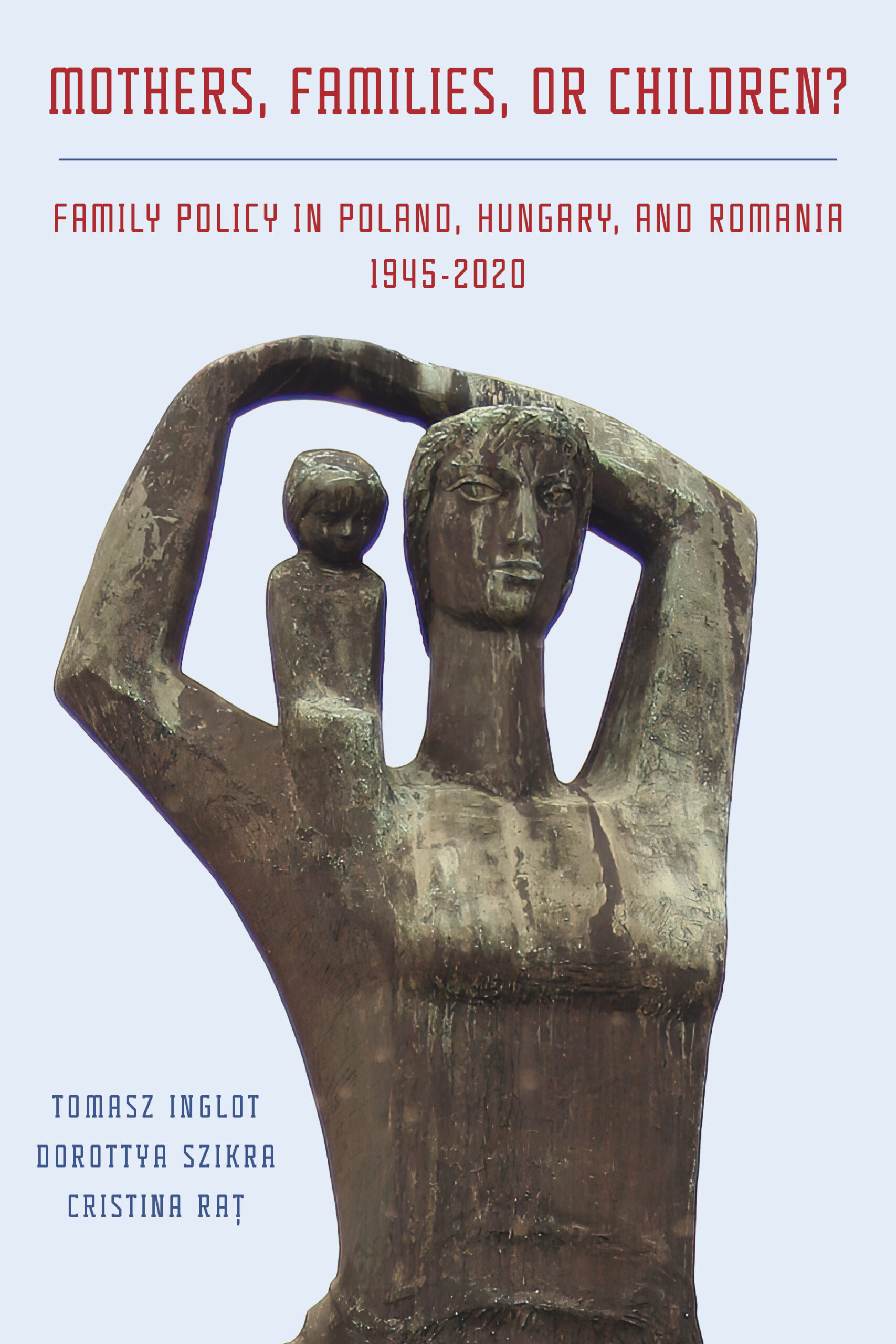State approaches to family in Poland, Hungary and Romania

Published by: University of Pittsburgh Press

In May 2022, Katalin Novák became Hungary’s first woman president. Her tenure was checkered as regards the family. Not only was she herself a mother of three, a detail no news outlet neglected to mention, but she had also previously served as Minister of Family Affairs. These “affairs” included values as much as policy. Novák encouraged women “not to be afraid of having children,” stressing that “having children will save the world.”1 Her gospel did not reach out to same-sex couples. Family values in contemporary Hungary are bound to traditionalism. Faced with the dangers of post-modernism, Hungarian families and children demanded protection. Such rhetoric made it particularly ironic when her presidency came to a premature end due to her decision to pardon the deputy director of a children’s home implicated in covering up accusations of child sexual abuse at the home. Her short resignation speech, too, mentioned that she is a mother of three.
The fight over the family has a long history in Eastern Europe. A century ago, in the 1920s, the same side of the political spectrum warned (as it still does today) that the specter of communism was haunting the traditional family. Even before the specter became palpable in the streets of Budapest, conservative groups rose to defend the family and the faith.2 But family affairs are about policy as much as values. In that respect, Novák may be an heir to the regimes she anathematizes. This is one possible reading of the book under review, which studies family policy in three socialist and post-socialist regimes: Poland, Hungary, and Romania. The comparative view allows Hungary to boast a truly “family-oriented policy” compared to Poland’s “mother-oriented” and Romania’s “child-oriented” family policies – all inherited from the communist past, itself the fruit of earlier roots (p. 4).
Even before the specter became palpable in the streets of Budapest, conservative groups rose to defend the family and the faith. But family affairs are about policy as much as values.
Each orientation gave rise to a different set of policies. By the early 2000s, Hungary had developed the most extensive “core cluster” of benefits in the aftermath of communism, covering maternity insurance, childcare leave, kindergartens, family allowances, nurseries, and birth grants. Poland’s core benefits were narrowed to maternity insurance and child-care leave, whereas Romania funded nurseries, kindergartens, and child allowance in addition to maternity insurance. These core clusters became more stable over time. Thus, for example, not even the concern over male unemployment in the late socialist period could seriously undermine the protections for working mothers envisioned and instituted since the interwar period. That such roots go back as far as the late nineteenth century often means that the reader enters the story mise-en-scène, wondering why and how such “ideations” as Poland’s mother-centrism came to be.
An often larger but more volatile cluster of benefits was susceptible to contingency. The authors excel at untangling the two. A vast array of sources — archival, published, and oral — allow readers to grasp the influence of actors as different as the Church, feminists, and bureaucrats. Since the authors are interested in policy more than debates, their analysis captures change even when family policy is sidelined in favor of other, more pressing issues. The authors show, for example, how expensive benefits like family allowances became untenable in shock-therapy Poland but survived in Hungary. Indeed, to Novák and Orbán’s distress, the expansive core cluster of benefits in Hungary mitigates any claim to a rupture after 1989. Even here, the authors show the role played by old actors as well as new ones (including the European Union), even if their impact has proved limited.
The formal inquiry of the social sciences is rarely captivating. Yet its contribution to the study of the welfare state, the rise and fall of state socialism, Europeanization, and even “modernization” more broadly is immense. Of particular value in this study is the inclusion of Romania, which not only complements Hungary and Poland’s ideations but also fills a significant lacuna in the unevenly developed literature on Eastern Europe. It thus serves as a fantastic reference for scholars of family and welfare policies of other regions. Social scientists with broader interests will admire the methodological sophistication that balances institutionalist and agential approaches to historical change – and models a fruitful and coherent form of producing collectively authored monographs.
Orel Beilinson is a postdoctoral fellow at the Polonsky Academy for Advanced Study in the Humanities and the Social Sciences. He is currently working on a book manuscript titled “Tomorrow Belongs to Me: Coming of Age with Modern Europe.”
1 Hungary Today. “Katalin Novák: Having Children Will Save the World.” May 3, 2022. https://hungarytoday.hu/katalin-novak-having-children-will-save-the-world/.
2 Béla Bodó, “Faith, Family and Fatherland: Conservatism and Right Radicalism in Interwar Hungary,” In Conservatives and Radicals: Europe between First and Second World War (1918–1945), ed. Marco Bresciani (New York: Routledge, 2021): 167–192.
